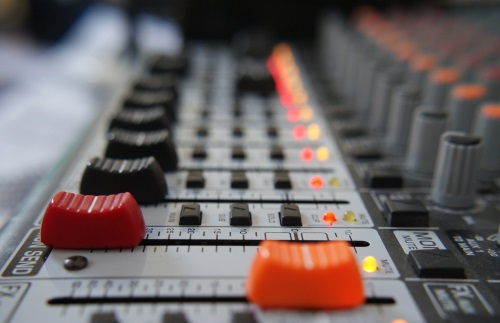Everyone loves a big console. Even when they’re small in size, like modern digital consoles, we favor consoles that have everything we need to solve any problem that may come up.
But what about those times when, for whatever reason, a big console is not available?
That’s the time for ingenuity and some special techniques that maximize the usefulness of the available feature set. Some people call these “workarounds,” but the term I like is “tricks.”
You know, like a magician. Here are some of my favorite tricks.
The XLR “Y” Cable
The one-female-to-two-male XLR “Y” cable is a powerful problem solver that should be in every audio person’s bag of tricks. It’s most common use is splitting an input to two channels of a mixer, using one channel monitors, the other for mains. This allows the EQ and processing used on one to not appear in the other.
It can be especially important if you need maximum gain before feedback in the monitors for a vocalist, or the input channel EQ helps with an acoustic guitar that’s giving you feedback issues. This trick can also be used for “wet/dry” channels, or if you need some sort of crazy EQ or effect for one part of a song and then quickly need to change back to normal.
Channel Insert As FX Loop
When a console is lacking a function, sometimes it can be found in a piece of outboard gear. For example, most effects units have a built-in mixing feature. When the aux sends are all used up, but you still want one more special effect on one more input, it’s a simple thing to insert the device into the input channel, and use the effect’s wet/dry mix control to vary the amount of effect.
No, it’s not ideal, but under battle conditions, you do what you must.
Direct Out As FX Send
The input channel’s direct output is not just for multi-tracking any more! An input channel’s direct output is another way to get signal to an effect that is only needed on one channel. This trick works well for things like a chorus on an acoustic guitar, or a reverb on the lead vocalist.
It’s best if the direct out is post-fader. A pre-fader can also be used as a direct out too, but you’ll have to keep a watchful eye (ear) on relative levels.
Audio Group As FX Send
So, you’re using four auxes for monitors and two for vocal effects – how are you going to get reverb on the drums?
Sure, the same ‘verb could be used for everything, but where’s the fun in that?
One trick is to assign the drums you’d like to have reverb on (I often leave out the kick drum) to a sub-group, and use the sub-group output as an effects send.
If you have a 2-in/2-out effects box, assign the drums to two sub-groups and you have stereo drums with stereo effects. Use the group’s insert loop and the mixing feature of the effects box, and you have it without the need for an effects send or return.
Pretty cool, huh? This trick can also be applied to vocals, horn sections, or any group of inputs.
Uncommon Insert Hardware
Everyone is familiar with dynamics processors and equalizers inserted into input channels. However, these are not the only useful tools you can insert into an input channel.
For example, many smaller mixers do not include a variable high-pass filter (HPF). The advent of digital loudspeaker processors finds a great many analog crossovers sitting around gathering dust. Just connect an insert send to the input of an analog crossover, then take the output from the crossover’s “high” output, and there you have it, a variable HPF.
Many common analog crossovers have a frequency range both above and below the frequency of a console’s switched HPF, which is usually 80 Hz to 100 Hz. If you don’t have an analog crossover laying around, the glut of these kinds of units on the used market makes them very affordable.
That 4-channel, 2-way crossover pulled from the old monitor system can now be four channels of variable HPF, all in a single rack space.















